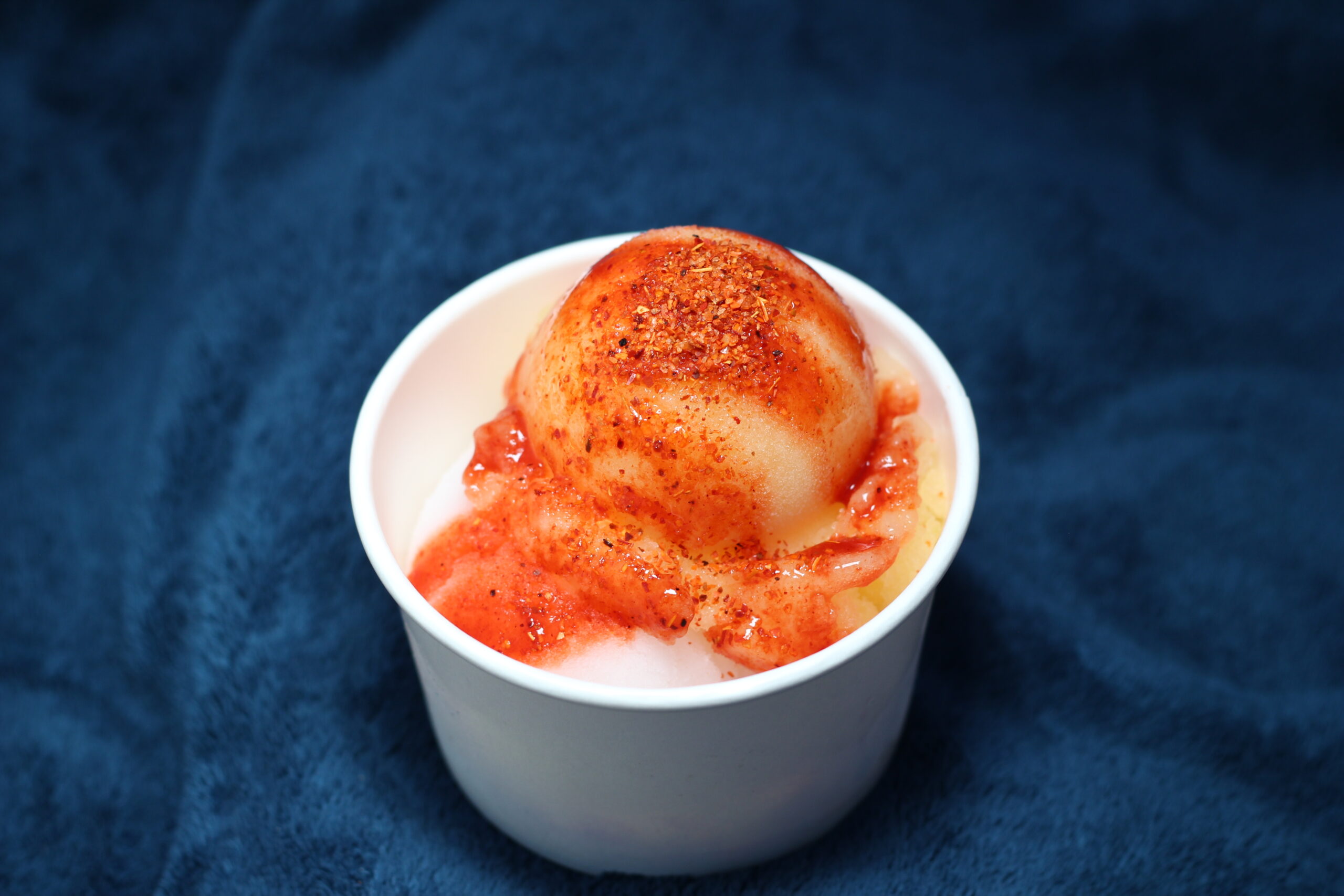[dropcap size=big]A[/dropcap]lfonso Ruiz worked in an aluminum manufactory for 28 years until he was let go and decided to dedicate his life to nieves de garrafa. Shortly after he was laid off, in 2016, he took a trip back to his hometown of Guadalajara, Jalisco, where he tried nieves de garrafa again at Nevería La Violeta. That visit inspired him; he was moved by how families united over ice cream and how there was something there for everyone. One of the most significant differences he noticed from trying nieves when he was a kid was the exponential increase in flavors, limited by imagination. The nevería offered over 50 flavors, Mexican classics like lime, cajeta, and mamey, but then there were more unconventional flavors like Red Bull or Bailey’s.
Ruiz opened La Garrafa MX in Montebello in 2020, a family-owned neveria bringing a piece of Guadalajara to Angelenos. They offer traditional nieves de agua (water-based flavors) like mango and lime and creative concoctions like fresa y jamaica, inspired by Ruiz’s childhood. “It was an agua that my mom used to make when I was a kid in Guadalajara,” says Ruiz, “The concept is very similar. You can make any agua fresca into a nieve.”
Nieve de garrafa distinguishes itself through its texture. It’s fluffy and light and usually not excessively sweet. Usually, they come in two styles, water-based and milk-based, but La Garrafa MX offers a third, almond milk-based. Water-based nieves de garrafa are more like sorbet or granita, smooth ice flavored with fresh fruit purees and cane sugar. Milk-based nieves are more in line with traditional ice cream, but the fat content is lower. Ruiz uses milk (instead of heavy cream), giving the nieve a creamy and fluffy texture without overwhelming richness.
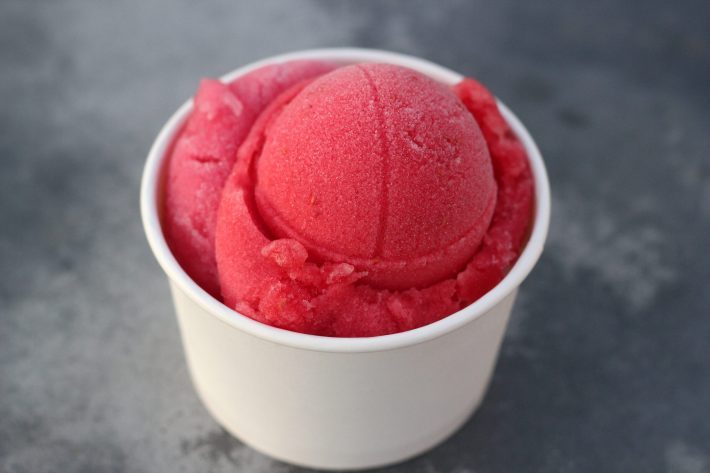
The nieves at La Garrafa MX are exceptional. The water-based ones are immensely refreshing and melt with the heat of your tongue, while the milk-based ones are a sweet and creamy treat similar to ice cream but much lighter. The limón nieve is bright with acidity and sweet like a frosty agua de limón. At the same time, the fresa y jamaica has the recognizable strawberry sweetness with a tang of acidity from the flower. The mango nieve isn’t overly sweet and instead allows the fruit to shine. The raspberry is a sleeper hit, red ice with a few seeds and refreshingly tart. For some flavors like lime and mango, Ruiz will ask if you want to add chamoy and tajin because the flavors complement the nieves. Try the nieves on their own, but the added toppings introduce a bit of salt and heat, mixing perfectly with the slight modest sweetness—a must-try.
“What makes it different is the portions you use, not too little or not too much fruit or sugar. It has to do with the time that you’re churning the nieve...”
The most popular nieve de leche is the Abuelita chocolate, which is airy, creamy, and speckled with bits of chocolate. Ruiz got the idea from a customer who came in randomly and asked if they offered a flavor using the famous hot chocolate. After testing, he found a recipe that he was happy with. The nieve de coco is a sweet and creamy fantasy thickened with shredded bits of coconut.
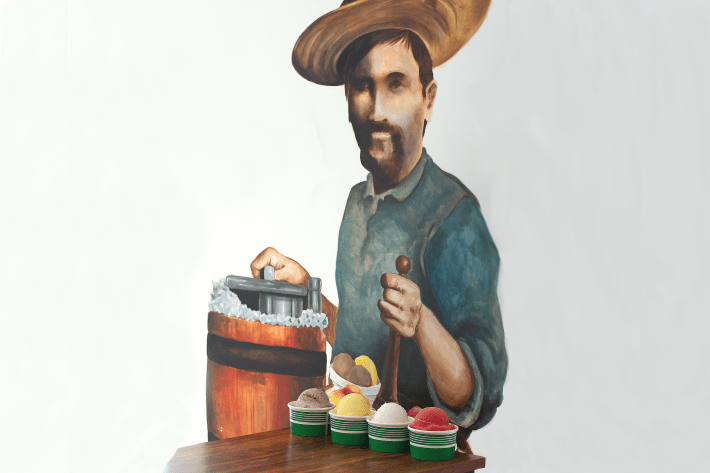
Ruiz takes inspiration where he can find it. Some flavors like taro directly respond to L.A.'s diversity, providing his customers with popular cultural ingredients but made in his style of nieve. He also offers keto flavors for those who can’t have sugar. Another nieve that was inspired by one of his customers was one that uses almond milk for a lactose intolerant customer. Excited by the challenge, Ruiz made a version of his nieve using the milk alternative. Other rotating flavors like mazapán or pitaya are flavors he’s testing to see if his customers are receptive. If they prove to be popular, he’ll adopt them as a permanent flavor.
Ruiz learned to make nieve de garrafa from a workshop in GDL, a labor-intensive process done by hand. Traditionally, nieve de garrafa is made in a garrafa or wood barrel. Inside goes a metal container, and the edges are lined with layers of ice and salt. After the metal container is filled with the liquid or flavor of nieve, the container is spun repeatedly by hand. As it turns, the cold transfers to the fluid, creating tiny ice crystals along the edges of the container. As it spins, the ice cream makers will take a paddle and scrape the sides of ice while also maintaining the right amount of salt and ice, as needed.
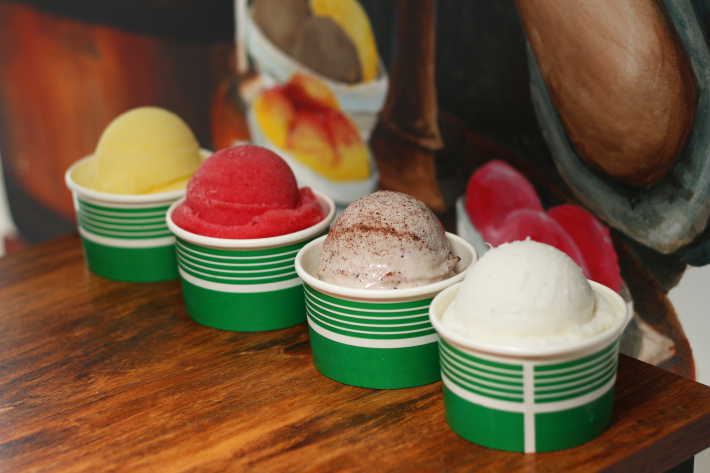
These days, there’s a machine that does the spinning and scraping for you, which is what Ruiz uses at his nevería. “It’s nieve al estilo garrafa since we obviously don’t make them in a garrafa,” admits Ruiz. The machine takes out the manual labor of spinning and scraping and results in a very similar product. Plus, it allows for consistency and better control of temperature.
The most challenging part of making nieves de garrafa is patience and trial and error. “What makes it different is the portions you use, not too little or not too much fruit or sugar. It has to do with the time that you’re churning the nieve,” explains Ruiz, “If you spin it too much, you’ll increase the amount of air that’s in the nieve, making it too foamy.”
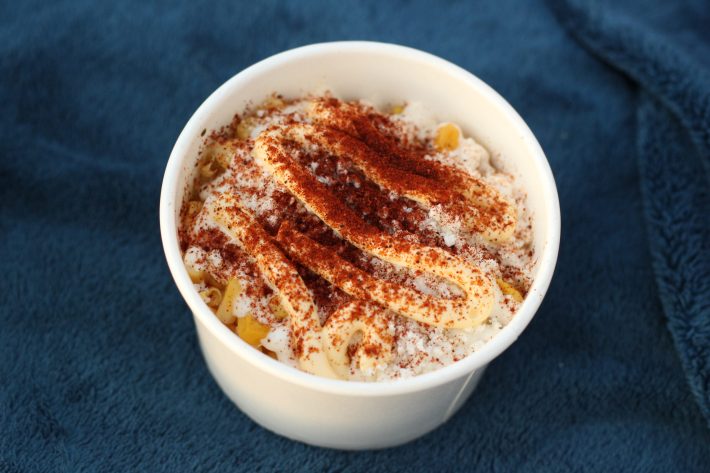
If you look very closely at the nieves from La Garrafa MX, you’ll see a tight formation of tiny ice pebbles bound together. As it sits, the temperature of the air makes the ice cream sweat, making it easier to see the tight formation of the ice, a labor of love and passion. “He used to make the ice creams at home,” his daughter explains, “He would do it in the backyard, just spinning and spinning.”
2208 W Whittier Blvd, Montebello, CA 90640.
